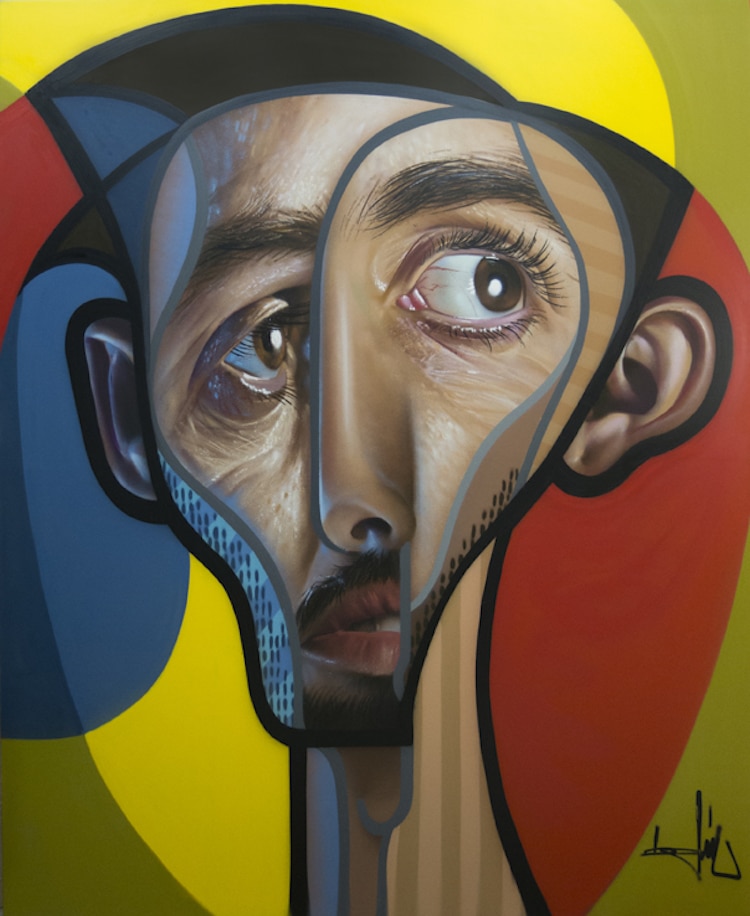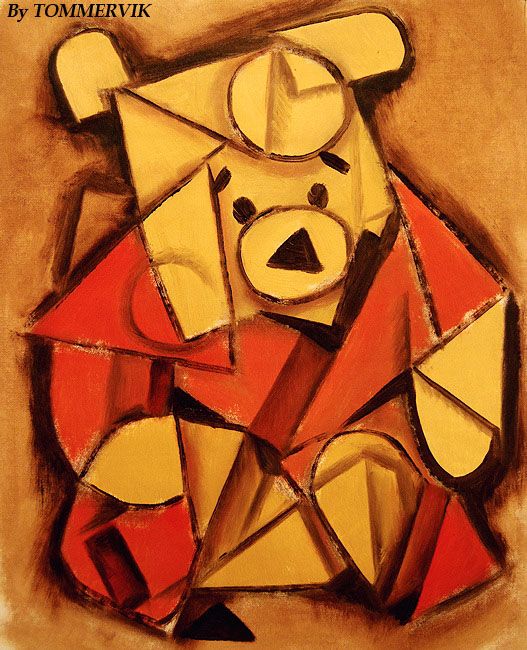
Cubist Original Oil Painting Modern Cubism Blue Violinist Marlina Vera
Cubism was an influential visual style of art, approached by various artists. As an evolving movement it had become a lasting technique of painting throughout the period of Modern Art. Cubism enabled many artists to abandon the traditional art and recognize a new perspective consisted of geometric shapes, a construction of lines, and a new.

Captivating Cubism Art That Will Have You Gasping With Delight Bored Art
Cubism was a revolutionary artistic movement that emerged as a response to a rapidly changing world. Its distinctive characteristics, including geometric abstraction, analytical methodology, incorporation of collage and mixed media, and intellectual engagement set it apart from contemporary art movements.

The Lasting Effects of Cubism
Deriving its name from the Latin word for a cube, Cubism breaks images and objects down into fragments of squares, cones, spheres, pyramids, and other geometric shapes. There are three distinct periods within the Cubism art movement: Analytical Cubism, Synthetic Cubism, and Orphic Cubism. Still Life with a Guitar (1913) by Juan Gris; Juan Gris.

Graffiti Portraits Creatively Blend Cubism with Hyperrealism
Cubism, highly influential visual arts style of the 20th century that was created principally by the artists Pablo Picasso and Georges Braque in Paris between 1907 and 1914. The Cubist style emphasized the flat, two-dimensional surface of the picture plane, rejecting the traditional techniques of perspective, foreshortening, modeling, and chiaroscuro and refuting time-honoured theories that.

Ben Garrison My Latest Cubist Paintings
The Influence of Cubism on Modern Art. Everyone will probably recognize the apparently strange, fragmented paintings, often with primary shapes and colours. There is a good chance that this was a cubist work of art. At the beginning of the last century, Cubism left a lasting impression on later and contemporary art movements and architecture.

Original Abstract Painting Cubism Acrylic on canvas Marlina Etsy
Some historians have argued that these innovations represent a response to the changing experience of space, movement, and time in the modern world. This first phase of the movement was called Analytic Cubism. In the second phase of Cubism, Synthetic Cubism practicioners explored the use of non-art materials as abstract signs.

a drawing of two people with different colored shapes on their faces
Cubism is an abstract artistic movement created by Pablo Picasso and Georges Braque in the early 1900s that influenced other forms of art, music and literature.

Cubism Instrument Oil Pastel and Collage Art Lesson Create Art with ME
What set Cubism apart, though, was the movement's continued exploration that carried the conversation of art into the abstract realm. Braque, Picasso and the Origins of Cubism. The name of Cubism stuck after a critical review by Louis Vauxcelles of a 1908 exhibition at the Parisian Gallery of Daniel-Henry Kahnweiler.

‘Cubism The Leonard A. Lauder Collection,’ Starring Picasso and Braque
In today's post I showcase an inspirational collection of modern artworks and designs that have a clear touch of cubist style with their abstract characteristics and geometric construction. Unlimited Downloads of 2,000,000+ Brushes, Fonts, Graphics & Design Templates Ad. Linocut Brushes. Download Brushes. Desert Action.

Cubism portrait by lilrich731 on DeviantArt Cubist portraits, Pop art
The emergence of Cubist artists came at the turn of the 20th century. Led by Picasso and Braque, Cubism brought about a new way of seeing and perceiving in art. Cubism introduced the idea of breaking down objects into planes and ultimately dismantling the way we think we should see. By flattening, abstracting and pulling apart the original form.

Oleg Zhivetin, Tashkent, Uzbekistan Cubist art, Art painting, Cubism art
Cubism can be split into two distinct phases. The first phase, analytical cubism, is considered to have run until around 1912. It looks more austere or serious. Objects are split into lots of flat shapes representing the views of them from different angles, and muted colours and darker tones or shades are used.

62 Cubism Art Ideas Cubism art, Cubist paintings, Cubist art
Cubism. Pablo Picasso, 1910, Girl with a Mandolin (Fanny Tellier), oil on canvas, 100.3 × 73.6 cm, Museum of Modern Art, New York. Cubism is an early-20th-century avant-garde art movement that revolutionized European painting and sculpture, and inspired related artistic movements in music, literature, and architecture.

Captivating Cubism Art That Will Have You Gasping With Delight Bored Art
Style. Cubism is an early-20th-century art movement which brought European painting and sculpture historically forward toward 20th century Modern art. Cubism in its various forms inspired related movements in music, literature and architecture. Cubism has been considered to be among the most influential art movements of the 20th century.
The Influence of Art History on Modern Design Cubism Graphic design
Cubism is a Western modern art movement that began around 1907 in Paris, France and started to decline in 1914 with the start of the First World War. Although the original Cubist movement changed dramatically during this time, its influence lived on in art movements like Futurism, Constructivism, Abstract Expressionism, and others..

Contemporary Cubism Art Print "Sax Solo" Chicago Skyline Art
Cubism was an art movement that completely changed the face of European painting and sculpture and stirred similar movements in music, literature, and architecture. It has been considered the art movement with the greatest level of influence on modern art. This article features 20 most famous painting on Cubism art.

Cubist Portrait Painting by Koola Adams Artmajeur
Pablo Picasso - Cubism, Modern Art, Masterpiece: Picasso and Braque worked together closely during the next few years (1909-12)—the only time Picasso ever worked with another painter in this way—and they developed what came to be known as Analytical Cubism. Early Cubist paintings were often misunderstood by critics and viewers because they were thought to be merely geometric art.